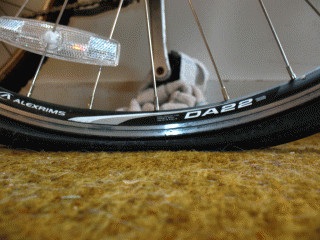The Science of Flat Tyres

These tests bust a bunch of cycling myths:
- All puncture-resistant belts are the same
- Narrow tyres roll faster
- Inner tubes are all the same
- Larger wheels are no more efficient than smaller wheels
- Tread patterns have no effect on road riding efficiency
- More tyre threads means a stronger, lighter tyre
Unfortunately the article doesn't shed any light on what makes a 'good compromise' between weight, rolling resistance and puncture resistance. For the vast majority of cyclists, puncture resistance is the 'fundamental' concern, but the price paid of the other two mustn't be too high.
There are also the practicalities to consider: which tyre designs and brands are easier to get on and off the wheel, for example? All inflated tyres have the potential to puncture, and when that happens there is nothing worse than struggling aimlessly as the tyre levers bend more than the tyre.
Share:
 Facebook
Facebook
 Twitter
Twitter
 Copy link
https://swinny.net/Cycling/Under_Test/-4038-The-Science-of-Flat-Tyres
Copy link
https://swinny.net/Cycling/Under_Test/-4038-The-Science-of-Flat-Tyres

